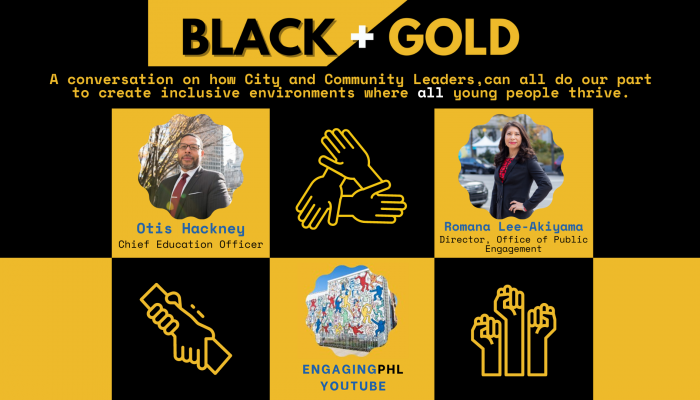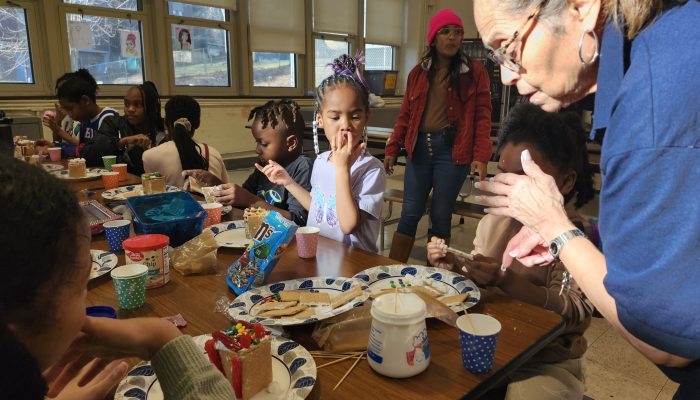Written by Linda Shieh, Serve VISTA Member in the Mayor’s Office of Civic Engagement and Volunteer Service
The COVID-19 pandemic had brought about global-scale disruptions that would test the capacity of humanity to responsibly unpack the ensuing challenges impacting all fronts of endurance. As a nation, we have collectively dealt with varying degrees of trauma – socially and economically as a body, and profoundly physical, emotional, and mental as individuals. During this time, the Black Lives Matter movement gained traction as crimes against Black and brown people entered mainstream consciousness and received national coverage. Concurrently, we saw a disproportionate increase in the number of racially motivated discrimination and violence against Asian-Americans since March 2020 as political and social rhetoric did little to quell anti-Asian sentiment; in effect, perpetuating existing tensions that have undermined efforts to address strained racial relations.
Coupled with pandemic stressors and unprecedented levels of trauma, opioid use, and violence, the potential for underlying pressures to erupt felt imminent. While work is being done to mitigate these issues, we remain in a reality in which racist attitudes and actions continue. Last Fall, the fragility of race relations broke through the levee as we witnessed actions that seemed to indicate a retrogression of these efforts; a show of symptoms proving such attitudes to be deeply ingrained in our culture. The November 18, 2021, SEPTA Broad Street Line incident involving Black and Asian students necessitated a reevaluation of the relationship between Philly’s Black and Asian communities, and the systems in place to encourage solidarity. While progress had been made on this front since the 2009 racial assault at South Philadelphia High School, the November 2021 attack triggered historic memories of pain and trauma experienced by both sides.
In its commitment to empowering residents to more effectively engage with one another and with their government, the Mayor’s Office of Public Engagement provided a platform for discussion among city and community leaders to explore ways in which we can create inclusive environments. Facilitated by Romana Lee-Akiyama, Executive Director of the Mayor’s Office of Public Engagement, the City hosted a fireside chat with Otis Hackney, Chief Education Officer, as part of its Black + Gold Series to implement intentional spaces for dialogue to identify opportunities for collaboration and promote cross-racial understanding.
Following the 2009 South Philadelphia High School (SPHS) incident, Hackey had been tapped to lead the effort in addressing the tone and climate at the school to provide a safer environment for all students, and to manage the complexities of SPHS. His background as a native Philadelphian growing up in a household hearing stories of his father navigating his own childhood in the heart of South Philly provided him particular insight into the nuances and racial tensions that have historically beset SPHS and the community. Drawing from this experience, he provides insight into the potential of City and community leadership to foster diverse communities that are empowered and equipped to move beyond coexistence and pursue a common vision even as we recognize our differences. Here are some themes that the pair explored while in conversation together:
Dare to Listen Empathetically
Systems that thrive begin with communication
One of the first things Hackney instituted when starting as principal at SPHS was to organize listening sessions among various stakeholders, starting from the adults who were advocates in the space to connecting directly with the students. These conversations allowed for open communication and an assessment of beliefs and assumptions (e.g., adults to students; students to students) that often contributed to the state of racial attitudes and behaviors within communities. The goal was to listen with the intent to understand. This approach provided intel on perceived experiences, issues, and challenges. It identified areas for improvement, informing immediate policy changes, which included a system for reporting incidences.
At SPHS, an issue that consistently surfaced was the lag in addressing behaviors by adults in the building. In response, the school moved to institute protocols and processes that would allow individuals to report an incident and expect swift and appropriate action. Furthermore, establishing a commitment toward cultural competency was critical in understanding possible barriers to communication (e.g., SPHS now allows students to submit reports in their native language). Much was achieved in the summer time span leading up to the next academic year in which Hackney would be tasked with carrying out the directives he had formulated as part of this effort. The first step in addressing the issue was to create spaces for dialogue.
Dare to Demonstrate Responsibility
Systems that thrive recognize and pursue areas to leverage and influence
The commitment to creating safe communities requires the cooperation of an entire team. This includes administrative support, but even more so, it involves multiple levels of engagement – from staff to students, parents to community members, and local organizations to government. It begins with a tension that motivates people to action. At SPHS, students from both sides came together to denounce the racist behaviors and structures that were helping to perpetuate racial divides. It became apparent that sustainable outcomes materialize when individuals choose to name the problem and exercise agency. Hackey observed, “If you want to change the behavior of students, change the behavior of the adults.”
Effective leaders build a culture of trust by actively acknowledging and rewarding efforts, providing space for individuals to feel and be seen. Alongside relationship building, the invitation to affect change starts with proactively addressing the needs of the very individuals one hopes to solicit participation and buy-in.
Effective leaders take ownership of the issues and invite others to do likewise. Hackney quickly identified individuals who cared about the work of creating safe spaces for students to learn. The strength of Black and Asian students coming together to decry the state of relations at SPHS indicated that there were a number of students who were willing to cross the demographics. When the adults dare to take responsibility and allow themselves to be held accountable for setting the tone for how systems function, change happens.
In a context in which racial tensions are high, it is essential to investigate the responses of adults, systems, and policies that may be producing a toxic environment. Evaluate the underlying dynamics impacting racial relations – why these particular groups of students, and why this school in particular? This reflection establishes a foundation for addressing complex issues and developing meaningful outcomes.
Dare to Care Deeply
Systems that thrive commit to pushing forward dialogue confronting the complexity of race and racial relations into the public sphere. Leaders dare to care deeply and take action
Effective leadership seeks to identify opportunities for immediate impact. At times, this requires bold decision-making and a level of care and concern that extends beyond self. The desire to move beyond people of different races merely coexisting to instead pursue a common goal is a byproduct of purposeful engagement. Cultural competency and understanding the role of intersectionality between social justice and racism become nonnegotiables.
These changes do not happen overnight. Hackney would tell you that it takes time and multiple conversations to establish credibility and levels of care. For him, consolidating support across the school required moments of pushing and pulling to eventually arrive at the outcomes he sought to put in place. The commitment to care deeply is a conscious effort and a shift from mere agreement on issues to enacting change. It starts with an investigation of “the why” that often results from synthesizing information and choosing to think critically about how we position ourselves with respect to the world around us.
To watch the full Fireside Chat, click here.




